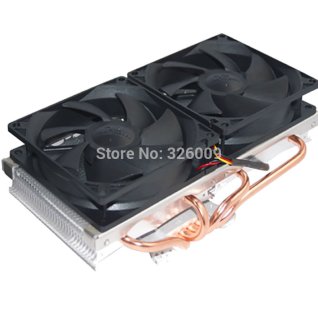This project is being started in a conception stage. Actually the source code to control the cooler is almost ready (with the debugging pending obviously) and some components are being sourced.
Asa brief introduction, a thermoelectric device is an arrangement of P and N silicon junctions that react when a dc current circulates across them. The reaction obtained is that one fo the sides of the junction is cooled down (in relation to its ambient) and the other is heated up. This means that, applying a simple thermodynamic energy balance, the cold side absorbs some energy from its environment and the hot side releases it to its environment plus the electrical energy (V x I) introduced. For more information on this, please refer to [1] and [2].
The thermoelectric module is a Kryotherm Drift 0.8 that I found on my “old stuff store” and that it may be adequeate for this purpose. From the manufacturer, a fast calculation estimates that a cold temperature of around 8ºC could be reached when external temperature is 30ºC considering an insulation of 2 K/W.

Figure 1: calculation of the operating point (from manufacturer’s application)
Additionally, in order to cool down the hot side of the thermoelectric module, a cooler like this one is to be used.

Figure 2: hot side cooler
With this type of cooler (of heatpipe technology), I expect to be able to reach a thermal resistance around 0.3 K/W on the hot side (we’ll see…).
The program follows the states machine depicted in the following figure.
CHECK HEATSINKS TEMPERATURE: Firstly it checks the heatsink temperatures looking for extremely high (on the hot side) or extremely low (on the cold side).
ALARM ROUTINE: If a high side overtemperature is detected, the cooling power of the module is reduced to the minimum and the fan speed is set to maximum value. On the other hand, if a low side undertemperature is raised, the hot side fan speed and the cooling power are reduced in order to increase the temperature.
INTERNAL TEMPERATURE AVAILABLE: If the measurement of the internal temperature is available, it uses it to regulate the cooling power requested to the module. Otherwise, it uses the cold side heatsink temperature to setup the cooling power; it simply tries to fix the heatsink temperature between 0ºC and the target temperature value (5ºC).
REGULATE FAN SPEED WITH HOT SIDE TEMPERATURE: This tries to keep the hotside temperature within acceptable values by regulating the speed of the fans. It performs an hysteresis control to increase/decrease the fan speed trying to keep the hot side temperature at a target temperature (50ºC).
FAN AT MAX SPEED FOR TOO MUCH TIME: This protection monitors the time that the maximum fan speed is being requested and if the hot side temperature derivative is increasing (even with fan at max speed the hot side temperature is increased), a reduction on the cooling power is commanded.

Figure 3: states machine